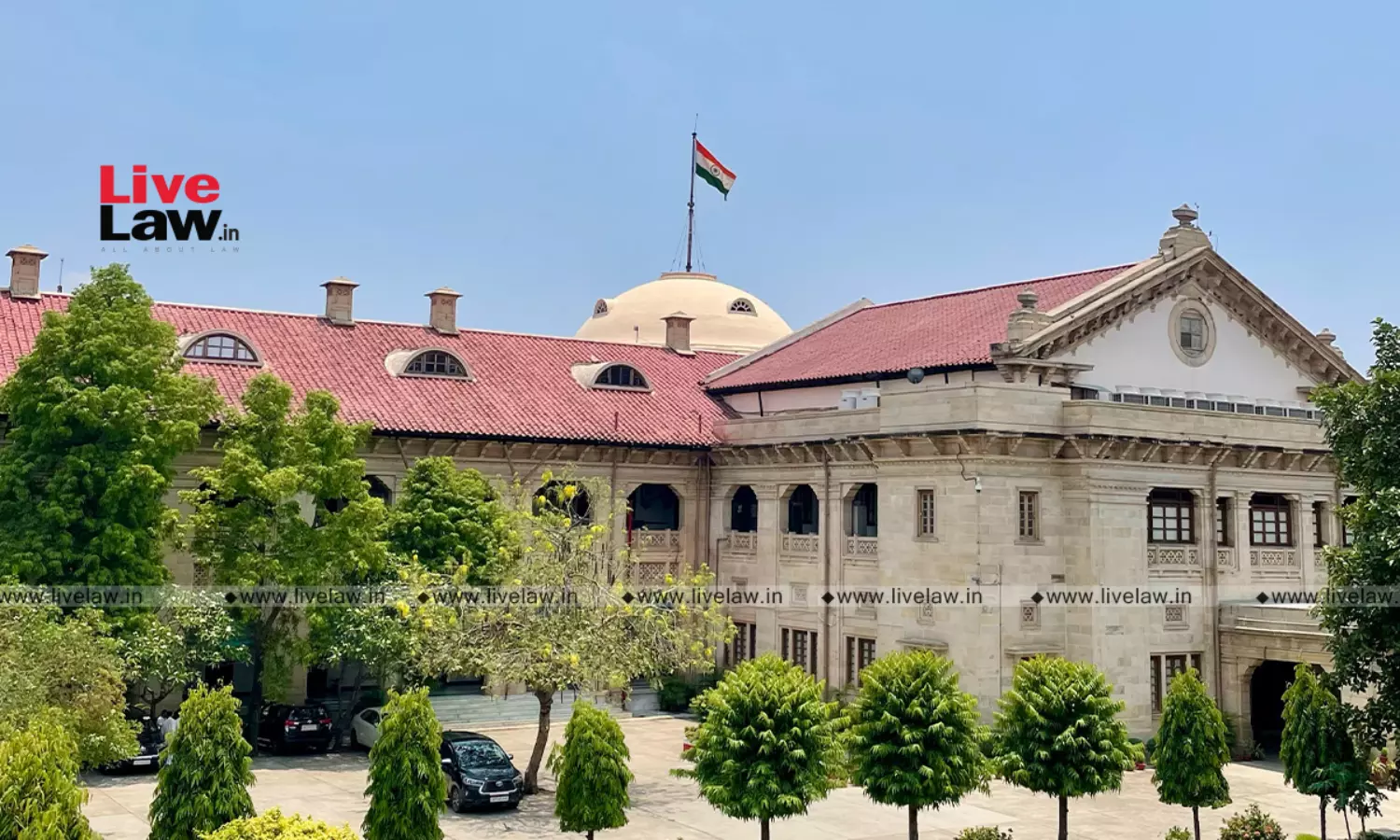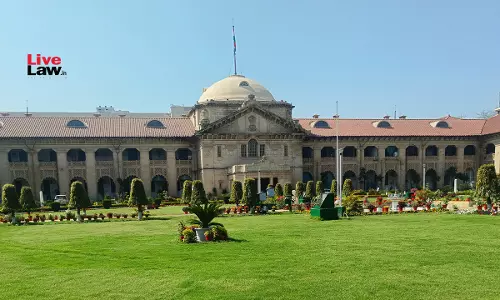'Material Contradiction In Medical & Eyewitness Evidence Creates Doubt On Prosecution's Case': Allahabad HC Sets Aside Conviction U/S 304 (I) IPC

On Tuesday, the Allahabad High Court set aside an accused's conviction under Section 304 (I) IPC based on the martial inconsistency between witnesses' oral testimony and medical evidence on record. Relying upon the Supreme Court's 2021 Judgment in Viram @ Virma v The State of Madhya Pradesh LL 2021 SC 677, a bench of Justice Ashwani Kumar Mishra and Justice Dr. Gautam Chowdhary...
On Tuesday, the Allahabad High Court set aside an accused's conviction under Section 304 (I) IPC based on the martial inconsistency between witnesses' oral testimony and medical evidence on record.
Relying upon the Supreme Court's 2021 Judgment in Viram @ Virma v The State of Madhya Pradesh LL 2021 SC 677, a bench of Justice Ashwani Kumar Mishra and Justice Dr. Gautam Chowdhary observed that the material contradiction in the medical evidence viz-a-viz the eyewitness account creates doubt on the prosecution's case.
“We have already observed that the ocular version of the incident is irreconcilable with the medical evidence on record and the inconsistency remains unexplained by the prosecution. Once that be so, it cannot be said that prosecution has succeeded in proving its case beyond reasonable doubt. Consequently, the applicant is entitled to get the benefit of doubt,” the Court said as it acquitted accused Rajendra Yogi in connection with a 2015 Murder case.
Case in brief
As per the prosecution's case, it was alleged that Rajendra Yogi-appellant mercilessly beat his stepson (6-year-old Dharmendra), leading to his death. The accused was apparently upset about the fact that the deceased had taken bread/food from a neighbour's aunt.
The accused was convicted by Additional Sessions Judge, Court No. 8, Mathura, in 2020 and sentenced to life imprisonment and a fine of Rs.1,00,000/-.
Challenging his conviction, the accused-appellant moved the High Court, wherein his counsel argued that the prosecution's claim of the deceased being assaulted by the accused was contradicted by the postmortem report, which showed no injuries from fists or kicks.
Rather, it was further argued the said postmortem report indicated that the cause of death was throttling, which suggested that the prosecution's story may be false.
High Court's observations
Examining the evidence on record, the Court noted that the prosecution's case rests on the testimonies of two witnesses of fact, PW1 (who is married to the deceased's elder sister) and PW-2 (the deceased's mother). However, both of them did not witness the incident, and their source of information was PW3 (12-year-old boy/brother of the deceased). Hence, the Court concluded that these witnesses did not provide substantial details on the incident's specifics.
Further, analysing PW3's testimony, the Court noted that though PW3's version was consistent in that he saw the entire incident, the cause of death as per the postmortem report and the opinion of the autopsy surgeon was “at a crossroads” with his oral testimony.
The Court noted that the medical evidence, in the form of a postmortem report as well as testimony of the autopsy surgeon, categorically stated that the deceased died on account of throttling and even a Ligature mark was present on the neck of the deceased; however, PW3 or for that matter PW6 (who substantially saw the incident) did not suggest in their testimonies that the accused-appellant had throttled the deceased.
Perusing the trial court's judgment, the HC noted that the court had rejected the dichotomy between the oral testimony of witnesses and the medical evidence, as the accused's counsel had pointed out.
“…we are of the opinion that the specific case of the eye-witnesses is completely belied by the medical evidence on record. Witnesses of fact alleged that deceased Dharmendra was badly beaten with fists and kicks and later his head was banged on the wall but neither any injury is found on the head nor any signs of injury are shown on the face or forehead of the deceased. Since the deceased was a minor child of six years, any serious beating on him, leading to his death, is bound to carry some signs of injury. This is not the case as per the medical evidence. The contradiction, therefore, remains unexplained. Similarly, medical evidence shows cause of death to be throttling with hyoid bone fractured but the two witnesses of fact do not allege anywhere that the deceased was throttled. This contradiction also remains unexplained.”
Finding no justification in the trial court's rejection of the contradiction between the oral testimonies of PW3 and PW6 and the medical evidence, the Court observed thus:
“In our opinion, the material contradiction in the medical evidence viz-a-viz the eye-witness account clearly creates a doubt on the prosecution case. We do not subscribe to the view taken by the Sessions Court that these are aspects which could be overlooked.”
In view of this, observing that the ocular version of the incident was irreconcilable with the medical evidence on record, the Court concluded that the prosecution had not succeeded in proving its case beyond reasonable doubt.
Consequently, the Court acquitted the accused by giving him the benefit of the doubt and allowed his appeal.
Appearances
Counsel for Applicant: Subhash Chandra Raghav
Counsel for Opposite Party: Anubhav Sinha, GA
Case title - Rajendra Yogi vs. State of U.P. 2024 LiveLaw (AB) 485
Case citation: 2024 LiveLaw (AB) 485


![AMU Student Booked Over Anti-CAA Protests Moves Allahabad High Court Challenging Cognizance Order Allahabad High Court, Grants Bail, Alleged Anti-CAA Protester, Spent 26 Months In Jail, Haseen Alias Ishu v. State of U.P [CRIMINAL MISC. BAIL APPLICATION No. - 35291 of 2020],](https://www.livelaw.in/h-upload/2021/12/03/500x300_405291-caa-nrc-protests-and-allahabad-hc.jpg)
